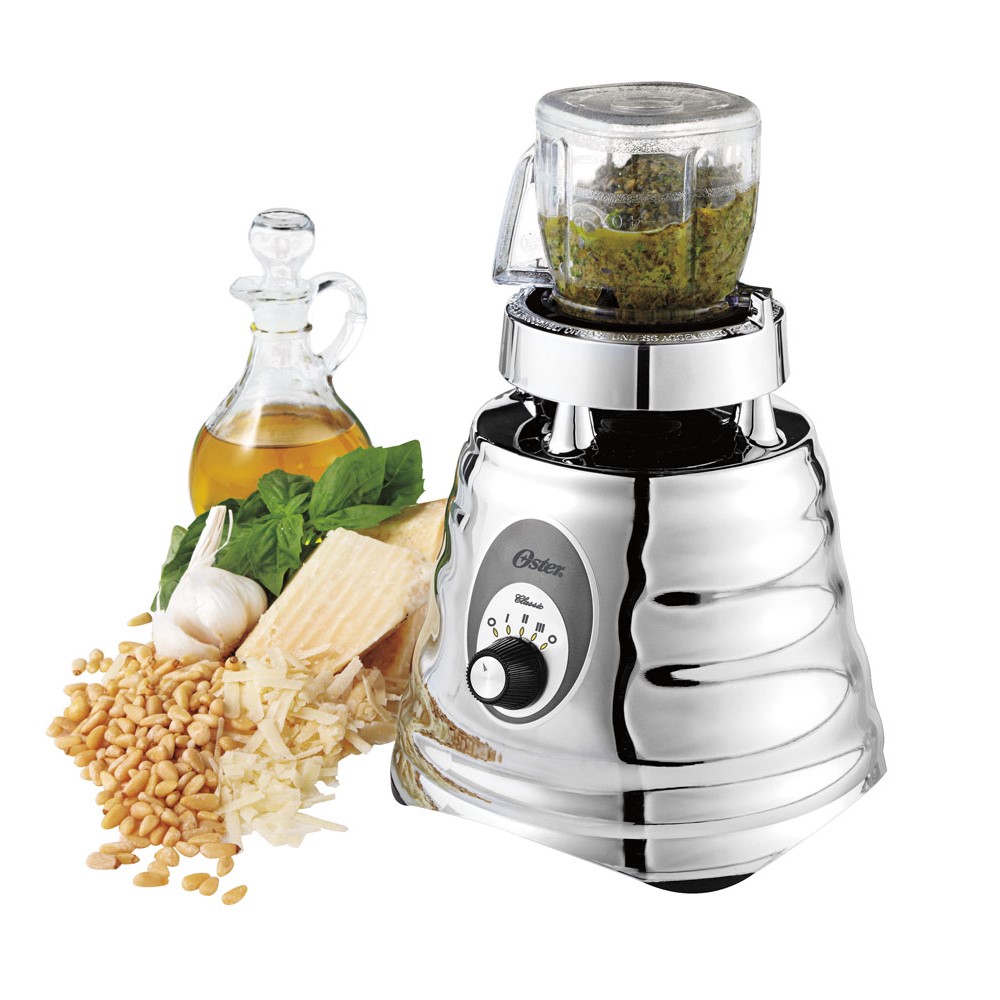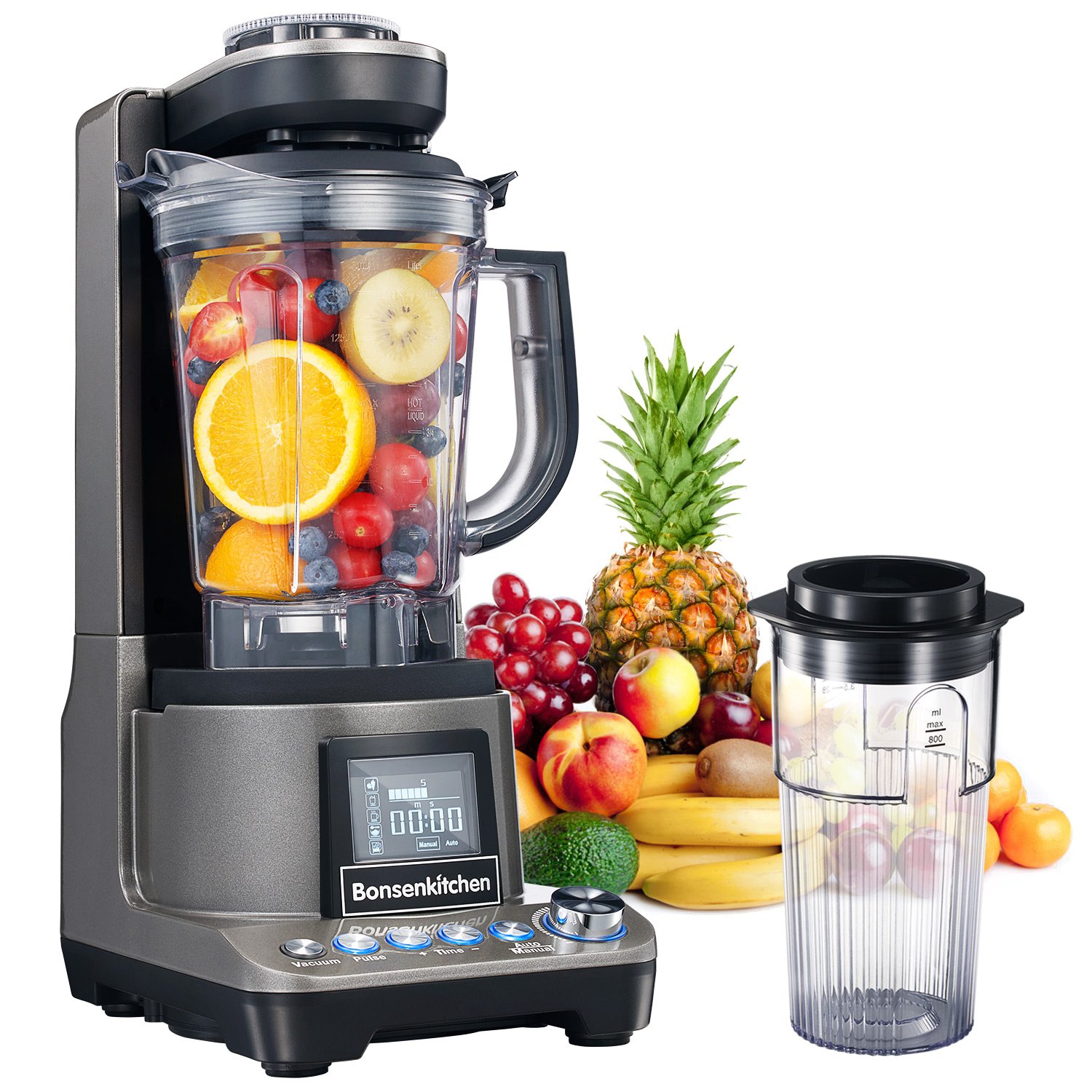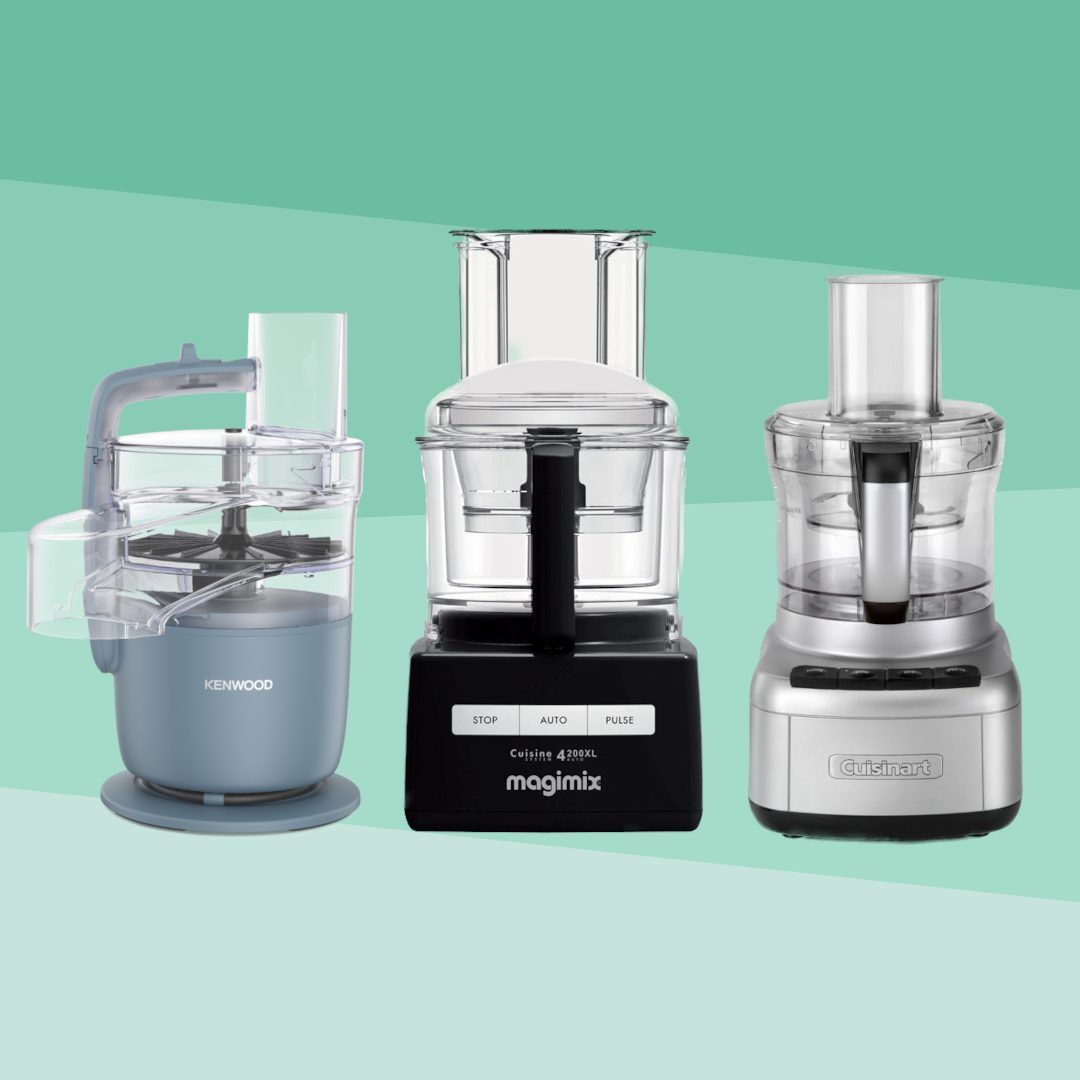
Blender vs. Food Processor: Core Functionalities
Understanding the core functionalities of blenders and food processors is crucial when choosing the right appliance for your kitchen.

How Blenders Work: Creating Smooth Mixtures
Blenders excel at making smooth mixtures. Their design allows them to crush, blend, and puree. Blenders are ideal for liquids and soft solids. They create silky smoothies, soups, and sauces with ease. The powerful motor and sharp blades can even crush ice.
How Food Processors Work: Versatility in Food Preparation
Food processors offer a wider range of functions compared to blenders. They chop, dice, shred, grate, and even knead dough. The spacious design accommodates various ingredients. With diverse attachments, food processors can handle everything from slicing vegetables to mixing cake batter.
Key Differences in Design and Attachments
The Structural Variations
When comparing a blender and a food processor, the design is a key differentiator. A blender’s tall, narrow shape is ideal for liquids, creating a vortex that pulls ingredients down to the blades. This design ensures smooth, well-blended liquids with ease. In contrast, a food processor has a wide, spacious bowl suitable for solid ingredients. Its design allows for uniform chopping and mixing of bulkier items without the need to add liquid.
Comparison of Blades and Discs
Blades and discs distinguish these two appliances. Blenders usually come with a fixed blade, sharp and efficient for blending and pureeing. Food processors feature a variety of interchangeable blades and discs. These include the S-shaped blade for chopping, slicing discs for even cuts, shredding discs for grating cheese and vegetables, and dough blades for baking tasks. The varied attachments enable a food processor to perform a range of culinary chores beyond the capabilities of a blender.
Choosing Based on Your Cooking Preferences
Deciding whether to use a blender or food processor depends on your cooking style and needs.
Situations Best Suited for a Blender
Blenders shine when handling liquids and creating smooth textures. They are the go-to for:
- Smoothies: Blend fruits, veggies, and proteins into a drinkable treat.
- Soups: Puree veggies and broth into creamy concoctions effortlessly.
- Sauces: Achieve smooth, well-emulsified sauces with a blender’s fine touch.
- Ice-based Cocktails: Crush ice and mix drinks for a frosty beverage.
Blenders efficiently manage tasks requiring a liquid base or fine consistency.
Situations Best Suited for a Food Processor
Food processors excel at tasks that involve solid foods or need precision. Use a food processor for:
- Chopping Vegetables: Cut down prep time with quick, uniform chops.
- Making Dough: Mix ingredients and knead dough for breads and pastries.
- Grating Cheese: Shred blocks of cheese in seconds for cooking needs.
- Grinding Meat: Make your own ground meats for fresher meal options.
Choosing a food processor is best when dealing with solid foods or needing fine cuts.
 Practical Uses and Recipes
Practical Uses and Recipes
For both the avid cook and the casual chef, knowing the practical uses of kitchen appliances is key. When diving into the culinary world, blenders and food processors have distinct roles to play. They each shine with their specialized recipes that make them indispensable.
Favorite Blender Recipes
Blenders are your best friend when it comes to making anything liquid or creamy. Here’s a roundup of favorite blender recipes that are simple to make and super tasty:
- Green Smoothie: Combine spinach, avocado, banana, and almond milk for a nutrient-packed drink.
- Tomato Soup: Blend roasted tomatoes, garlic, and basil until smooth for a classic comfort food.
- Mango Lassi: Puree ripe mangoes with yogurt and a hint of cardamom for a refreshing beverage.
- Chocolate Hazelnut Spread: Whizz together hazelnuts, cocoa powder, and sweetener for a homemade treat.
- Caesar Dressing: Blend parmesan cheese, anchovies, and olive oil for an authentic salad topping.
Having a blender means you can create smooth and delicious concoctions in minutes.
Popular Food Processor Recipes
Food processors open up a world of food prep versatility. Here are some popular recipes where a food processor can be your kitchen hero:
- Salsa: Pulse tomatoes, onions, cilantro, and jalape?os for a chunky dip.
- Pie Crust: Quickly mix flour, butter, and water to form the perfect base for pies.
- Falafel: Grind chickpeas with herbs and spices to create these tasty patties.
- Pesto: Combine basil, pine nuts, cheese, and oil for fresh, homemade pesto.
- Breadcrumbs: Process stale bread to make fresh breadcrumbs for coating or topping dishes.
A food processor can drastically cut down your preparation time for a variety of meals.
Through these practical applications and delicious recipes, it’s evident how blenders and food processors serve as invaluable tools in the kitchen. Whether creating tasty drinks or prepping complex dishes, both appliances have the potential to enhance your cooking experience.
Benefits of Each in Your Kitchen
The kitchen is a hub of culinary creativity, and both blenders and food processors can be valuable tools. Depending on your cooking tasks and the recipes you want to tackle, choosing the right appliance can save you time and enhance the quality of your dishes.
When to Opt for a Blender
Choose a blender for tasks that require a smooth consistency. Here are some instances where a blender is your best option:
- Smoothies: Quickly whip up healthy, nutrient-packed drinks.
- Soups: Make creamy soups with a velvety texture.
- Sauces and Dressings: Create smooth, well-blended sauces that pour evenly.
- Desserts: Blend frozen fruits for a quick sorbet or ice cream.
Blenders are great when working with liquids or when you want to achieve a creamy, lump-free finish.
When to Opt for a Food Processor
A food processor is the go-to when solidity and precision are key. Use a food processor for these tasks:
- Chopping: Cut veggies fast and evenly.
- Dough: Mix and knead dough for fresh bread and pastries quickly.
- Shredding: Grate cheese or vegetables in seconds.
- Grinding: Make your own ground meats or spice blends.
Opt for a food processor when dealing with solid foods or when exact, fine cuts are crucial.
Understanding Overlapping Functions
While blenders and food processors have their own specialties, they also share some common functions.
Both blenders and food processors can tackle certain tasks:
- Pureeing: Both can make smooth pastes from cooked vegetables or fruits.
- Mixing liquids: They can mix drinks, such as shakes or other blended beverages.
- Making dips: They’re capable of creating creamy dips like hummus or salsa.
Unique Abilities and Limitations
Blenders and food processors have unique abilities and limitations that set them apart:
- Blenders are best for liquids and achieving smooth textures.
- Food processors excel with solid foods and can perform precise cuts or grinds.
- Blenders struggle with dry or thick mixtures without liquid.
- Food processors can knead dough, something blenders cannot do.
By recognizing the overlap and unique traits, you can make the best choice for your kitchen tasks.
 Conclusion: Making an Informed Choice
Conclusion: Making an Informed Choice
In summary, understanding the essential difference between a blender and a food processor enables home cooks to select the right appliance for their culinary needs. Blenders excel in emulsifying liquids and achieving smooth textures, particularly for drinks and soups. In contrast, food processors shine in a variety of food prep tasks, such as chopping, slicing, and mixing dough.
Ultimately, the decision between these two appliances should align with your cooking habits and preferences. If you find yourself gravitating toward smoothies and soups, investing in a high-quality blender could be beneficial. Alternatively, if you frequently chop vegetables or dough, a food processor may provide the versatility you need. Regardless of your choice, both appliances contribute uniquely to the culinary experience, and knowing their strengths will enhance your efficiency and enjoyment in the kitchen.
Thus, the difference between blender and food processor lies primarily in their intended functions, and understanding these nuances can significantly elevate your cooking adventures.